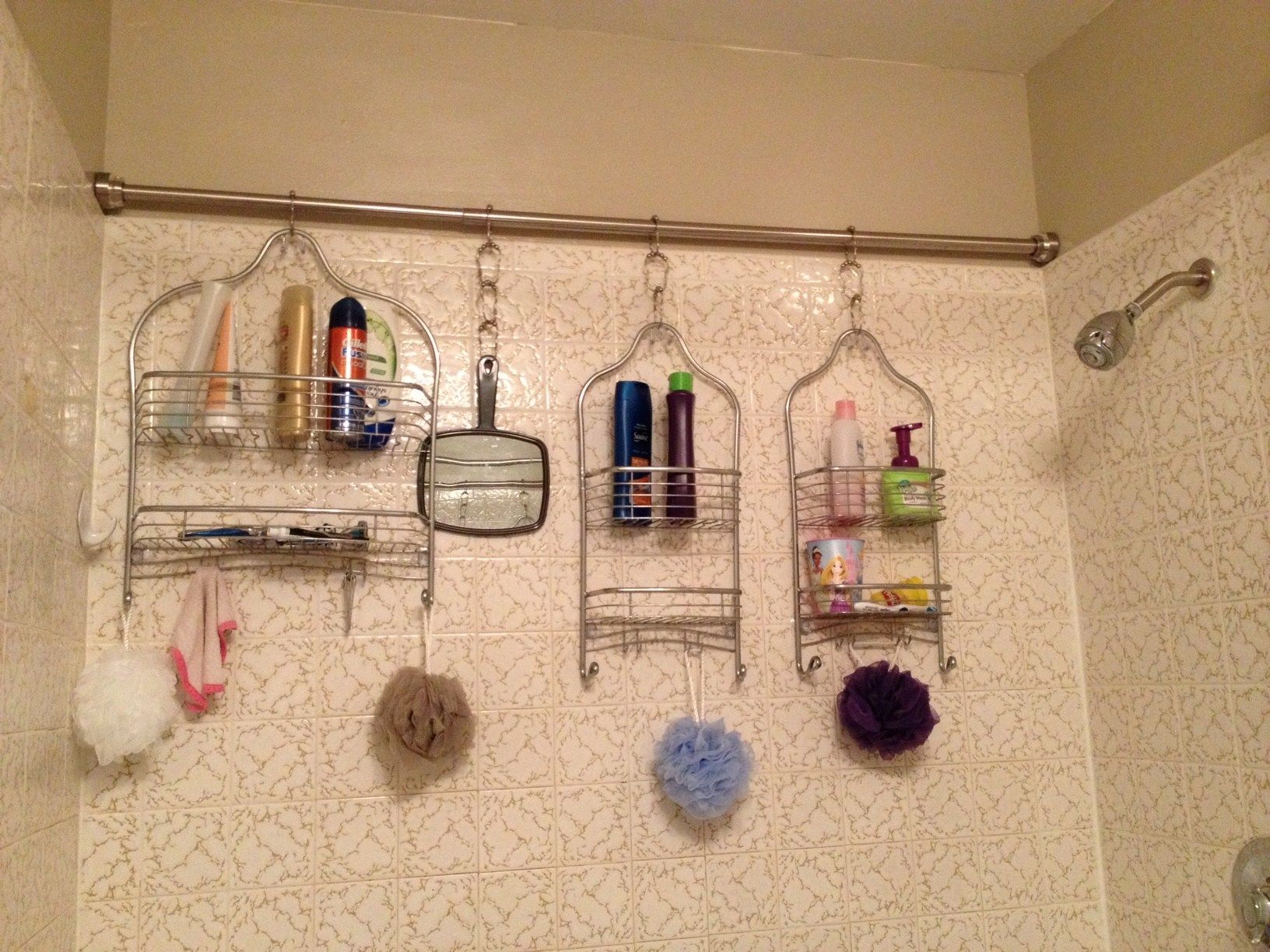Installation and Maintenance: Bathroom Shower Caddy Ideas

Choosing the right installation method for your shower caddy is crucial for ensuring its stability and longevity. The method you choose will depend on your shower’s walls and your personal preferences.
Suction Cup Installation
Suction cup installation is a popular choice for shower caddies because it’s quick, easy, and doesn’t require any drilling. However, suction cups may not be suitable for all shower walls, especially textured or porous surfaces.
- Clean the shower wall thoroughly with soap and water, ensuring it’s completely dry before attaching the suction cups.
- Press the suction cups firmly against the shower wall, ensuring they are securely attached.
- To remove the suction cups, gently pull them away from the wall, avoiding any sudden or forceful movements.
Adhesive Strip Installation
Adhesive strips are another convenient option for installing shower caddies. They are generally more secure than suction cups but may not be as durable for heavy loads.
- Clean the shower wall with soap and water, ensuring it’s completely dry before attaching the adhesive strips.
- Remove the protective backing from the adhesive strips and press them firmly against the shower wall.
- Wait for the adhesive to fully cure before hanging the shower caddy.
Drilling Installation
Drilling installation provides the most secure method for mounting a shower caddy, making it ideal for heavy-duty models or those that will be frequently used. However, this method requires some DIY skills and tools.
- Mark the desired location for the shower caddy on the shower wall, ensuring it is level and securely attached.
- Use a drill bit that is slightly smaller than the diameter of the screws provided with the shower caddy.
- Drill pilot holes at the marked locations, ensuring the holes are deep enough to accommodate the screws.
- Insert the screws through the shower caddy and into the pilot holes.
- Tighten the screws securely, but avoid overtightening, as this can damage the shower wall or the shower caddy.
Shower Caddy Maintenance, Bathroom shower caddy ideas
Proper maintenance is essential for keeping your shower caddy clean and functional.
- Clean the shower caddy regularly with soap and water, ensuring to remove any soap scum or mildew buildup.
- Avoid using harsh chemicals or abrasive cleaners, as these can damage the finish of the shower caddy.
- Inspect the shower caddy regularly for signs of wear and tear, such as loose screws, cracked or chipped surfaces, or damaged suction cups.
- Replace any damaged parts promptly to prevent further damage or potential safety hazards.
Common Problems and Troubleshooting
While shower caddies are generally reliable, some common problems may arise.
- Loose suction cups: This is a common problem, especially with suction cups that are not properly attached or are exposed to high temperatures. To fix this, try cleaning the suction cups and the shower wall, then reattaching them firmly. If this doesn’t work, consider replacing the suction cups with new ones.
- Adhesive strips detaching: This can happen if the adhesive strips are not properly applied or if the shower wall is not clean. To fix this, try cleaning the adhesive strips and the shower wall, then reattaching them firmly. If this doesn’t work, consider replacing the adhesive strips with new ones.
- Loose screws: This can happen if the screws are not properly tightened or if the shower wall is not strong enough to support the weight of the shower caddy. To fix this, try tightening the screws securely. If this doesn’t work, consider using longer screws or drilling new pilot holes.
- Rusting: Rusting can occur on metal shower caddies, especially if they are exposed to moisture and humidity. To prevent rusting, clean the shower caddy regularly with soap and water and dry it thoroughly after each use.
